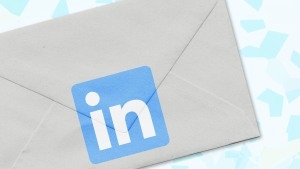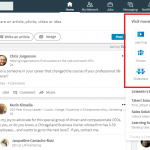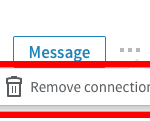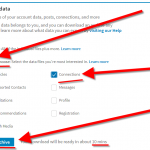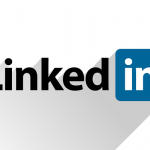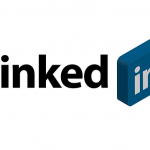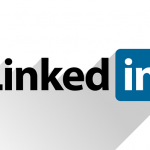These Are The LinkedIn InMails That Get The Highest Response Rates
By Neha Mandhani , July 16, 2017
If you’re on LinkedIn and have a complete profile, there’s a good chance you’ve received “InMail,” the platform’s messaging feature for people who aren’t first-degree connections. Used well, InMail can be a powerful networking tool. Here at LinkedIn, we’ve seen interactions between recruiters and members increase 40% over the past two years, and InMail response rates are up 25% this year after an all-time-high in June. More people are finding jobs through the InMails they receive, and recruiters are being more thoughtful in the messages they send.
But with the overall volume of InMail rising, you’ll want to make sure the messages you send are actually getting read and responded to—and that goes for recruiters as much as for ordinary members who use LinkedIn for networking. So we dug into the data on the types of messages the most successful recruiters send on LinkedIn to find out which ones actually work. Here’s what we learned.
Make It Personal, And Point Out Commonalities
Simply sending personalized InMails instead of canned templates can boost your response rate by 15%. Unsurprisingly, sending a bulk message is a major factor in driving down response rates. So yes, you can use templates, but take the time to customize them.
I’m a yoga teacher in addition to my marketing role at LinkedIn. A few years back, a recruiter who also happens to be a yoga teacher got in touch and referred to both of our yoga careers. Here’s what it said:
Hi Neha,
I noticed on your LinkedIn profile that you’re a yoga instructor. I was recently certified as a yoga instructor as well, and value the importance of having a passion, outside of work.
I work for ABC company and we have just received funding that will allow us to grow our company substantially. We’re looking for a program manager to join our team. I love your experience in the tech industry, as well as your passion for work-life balance and think you can be a good fit. Would you be interested in a call?
While I wasn’t interested in the role, I took the time to respond and say thanks for reaching out. Mentioning things you have in common helps create an immediate personal connection and can boost your chances of getting a response. Folks who share a group in common with you, for example, are 21% more likely to write back. And referencing a former employer in common increases your chances of getting an InMail response by 27%.
Emphasize The Connection
This may seem cliché, but using the word “connect” tends to boost response rates for InMail. The same goes for mentioning that you’d like to follow up—using terms like “talk,” “chat,” “call,” etc. can all improve response rates.
But don’t go much further than that! Among the InMail recruiters send, we’ve actually found that phrases related to scheduling (like specific days of the week), salary, and sharing email addresses, all tend to decrease the likelihood of response. (That said, LinkedIn recently rolled out a video preview feature that lets recruiters add links to company culture videos, for instance, that candidates can watch in-app.)
Many recruiters like to ask candidates for names of other people they know who might be interested in a certain job—and that’s also a mistake. It reinforces the idea that it’s all about the recruiter, not the job candidate. Build credibility and trust first, and you’ll find the candidate more receptive to sharing referrals. Here’s an example:
Subject line: Let’s connect!
I came across your profile and was very impressed with your design background. I’m recruiting for a well-known pharma company in Philadelphia and wanted to reach out and see if you were interested in hearing about an Art Director role. If you are, would love to share more details.
If not, either way, great to connect!
Keep It Short And Sweet
As with email, brevity helps. Make subject lines snappy but short, and keep the overall InMail message between 200 and 500 characters.
Subject line: Connection opportunity
I’m a marketing manager at XX company and I’m eager to learn from people like you, with your background. I came across your LinkedIn profile and your path is very similar to the one I hope to take. I was wondering if you would like to connect and grab coffee sometime?
Thanks!
Send It Whenever
Believe it or not, timing doesn’t matter. While most people tend to send InMails in the middle of the week to avoid Monday madness, that Friday mental check-out, or the perceived weekend black hole, our data shows that response rates are pretty much even all week long. That’s because people tend to respond when they can, not right when you’ve sent your message.
Refer To Their Profile
Successful InMail typically makes it clear that the sender has taken the time to read the member’s profile. For recruiters, that means acknowledging somebody’s accomplishments and asking about their interests and career goals (this also helps you determine if they’re the right fit)—which is great all-around networking advice to boot.
Never ask for a resume in your first message, and never pitch a position that’s at a lower level than the candidate’s current role. Our data indicates that nearly 70% of members who started a new role in the past 12 months were either promoted or made a lateral move.
Subject line: Exploratory chat with X company’s leadership team
Hope all is well. I’m part of X company’s talent team. I came across your profile and was very impressed with your background. Your experience at ABC company, XYZ company, and background in product management is really solid.
Our product leadership team is very interested in getting to know your background. I was wondering if you might be open to an informational chat. I’d welcome an opportunity to get acquainted and create a platform for you to connect with folks here.
Looking forward to hearing from you.
Target People Who Already Want To Hear From You
If you’re a recruiter or hiring manager, this one’s a no-brainer. Candidates who share content from your Career Pages are four times more likely to respond to your InMail than those who haven’t interacted with you. And users who follow your company on LinkedIn are 81% more likely to respond than people who don’t.
People who’ve already signaled interest in hearing about new opportunities by switching on LinkedIn’s Open Candidates feature likewise make for a captive audience; they’re twice as likely to respond to recruiters as the average candidate.
Some of these tricks and habits that lead to the highest response rates aren’t all that surprising. But like email, or really any other form of communication, it’s easy to get longwinded or sound unintentionally spammy when you’re reaching out to people you don’t know. So when you send your next InMail, take a cue from what the most successful recruiters do. And if you’re a recruiter yourself, you’re in luck: Your worst InMail habits shouldn’t even be that hard to break.
Neha Mandhani is a Product Marketing Manager at LinkedIn.
Dropping words like “talk,” “chat,” “call,” and “connect” makes it more likely you’ll hear back.
If you’re on LinkedIn and have a complete profile, there’s a good chance you’ve received “InMail,” the platform’s messaging feature for people who aren’t first-degree connections. Used well, InMail can be a powerful networking tool. Here at LinkedIn, we’ve seen interactions between recruiters and members increase 40% over the past two years, and InMail response rates are up 25% this year after an all-time-high in June. More people are finding jobs through the InMails they receive, and recruiters are being more thoughtful in the messages they send.
Fast Company , Read Full Story
(27)

